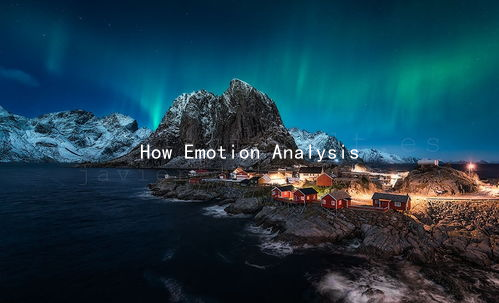How Emotion Analysis Models Can Transform Your Romantic Communication Skills
In todays fast-paced world, effective communication is often the key to building and sustaining romantic relationships. Emotional intelligence plays a significant role in this process, allowing individuals to express their feelings authentically while also responding to their partner’s emotions with sensitivity. As technology evolves, emotion analysis models have emerged as powerful tools for enhancing romantic communication skills.
Emotion analysis models use artificial intelligence and machine learning to detect and interpret emotions based on various inputs such as text, tone, and body language. These models can analyze conversations in real-time, providing insights into the emotional dynamics between partners. By understanding the emotions conveyed during interactions, individuals can adjust their communication styles to foster a deeper emotional connection.
One of the primary benefits of using emotion analysis models in romantic communication is the ability to recognize emotional cues that may otherwise go unnoticed. For instance, subtle shifts in a partners tone or word choice might indicate hidden feelings such as frustration, sadness, or insecurity. By leveraging these insights, partners can address issues before they escalate, showing empathy and support at critical moments.
Moreover, emotion analysis can help individuals articulate their own feelings more effectively. Many people struggle to express their emotions clearly, often fearing vulnerability or misinterpretation. With the insights gained from emotion analysis, individuals can learn to frame their sentiments in a way that resonates with their partners. For example, rather than saying, I feel ignored, one might express, When I dont hear from you throughout the day, I feel a bit distant from you. This shift not only clarifies the emotional experience but also invites a more productive dialogue.

Another advantage of emotion analysis models is their ability to provide feedback on communication patterns. By examining conversations over time, individuals can identify recurring themes or misunderstandings. This feedback loop allows partners to hone their communication skills, ensuring that they are not only expressing themselves but also actively listening to their partner’s needs. For instance, if a pattern of defensiveness emerges, partners can work on techniques to create a safer space for open dialogue, fostering an environment where both feel comfortable sharing their thoughts and emotions.
In addition, emotion analysis can aid in navigating conflicts. During disagreements, emotions can run high, making it challenging to communicate rationally. By utilizing emotion analysis tools, partners can gain insight into their emotional states, helping them to approach conflict more thoughtfully. For instance, if one partner is identified as feeling anxious during a discussion, the other can adjust their approach to be more reassuring, ultimately leading to more constructive conversations.
Lastly, the implementation of emotion analysis models empowers individuals to cultivate greater self-awareness. Understanding one’s own emotional responses can lead to improved emotional regulation. When individuals are better in tune with their feelings, they are less likely to react impulsively, which is crucial in maintaining a healthy relationship. This self-awareness not only enhances personal emotional intelligence but also positively impacts the relationship dynamic as a whole.
In conclusion, emotion analysis models hold remarkable potential for transforming romantic communication skills. By providing insights into both partners emotional landscapes, these tools facilitate empathetic exchanges, articulate self-expression, conflict resolution, and self-awareness. As technology continues to evolve, harnessing the power of emotion analysis could be a transformative step towards deeper, more meaningful relationships. Embracing these advancements offers a path to improved romantic connections, ultimately fostering love, understanding, and resilience between partners.





